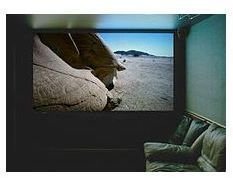Home Theater Lighting - Incandescent Light Bulb or Fluorescent Light?
Should you be lucky enough to have a space in your home solely devoted to movie-watching, you should have considered installing appropriate cove-lighting or lighting which is suited to your home theater space. Appropriate lights around your screen and viewing-area are important not solely for decorative purposes but also because your eyes will suffer from watching a movie from a poorly lit area. Moreover it is important to set up lighting properly so it doesn’t affect the screen and people can move around without bumping into things.
In this article we will look at the basic types of existing lights for your home-theater space – from standard incandescent light bulbs to more eco-friendly lighting – and what each type does. Since the article is aimed at beginners, we won’t deal with schematics but will provide some good links where to find these if you want to have a go at setting it up yourself. Remember to leave dealing with electricity to professionals should you not be equipped to do it.
Lighting Basics: Task, Accent, Informational and Ambient
Home lighting is usually classified into four distinct types, each serving its specific purpose: task, accent, informational and ambient lighting.
Task lighting, as the name suggests, is light used to help you with a task such as office lamps, light for a desk or light for playing music; this type of lighting is usually directional and it’s adjustable depending on your needs. Companies such as Quattro or Ott-Lite make these types of lamps, from adjustable task-lights to small spot-lights.
Accent lighting is usually used for decorative purposes, such as bringing out an aquarium for instance or a piece of art in your home (i.e. a painting, a vase). You can do without accent lighting however, as task lighting can be directed and hence serve a similar purpose.
Informational lighting is basically so you can see where you are without bumping into things: your closet light, the light in your hallway, to upstairs or garden-pathway lighting are all good examples of informational lighting.
Lastly, ambient lighting is the light that will surround the main room; whilst it will likely be diffused with other lighting types and not be too distracting it should always be there to help you see around the room you are in.
Bulb Types: Fluorescent, Incandescent and Halogen
Each type of bulb or light has different overtones and colors which should help you in creating atmosphere or, more practically, help you see your way around.
Fluorescent light is much like neon lighting, uses gas-discharge and needs to be mounted on a ballast in order to be fitted. This type isn’t usually an ideal choice for home theater lighting since it radiates in all directions; however you can buy a filter in order to make it less powerful.
Incandescent light is your standard tungsten filament incandescent light bulb, not very efficient or economical but widely used and good for specific uses. This type of lighting is usually quite bright and warm, with reddish/orange overtones; ideally you can use it for your ambience-lighting or simply as functional informational light.
Halogen bulbs are similar to an incandescent bulb, but the filament is sealed and they are much more energy efficient. Apart from that, the light they produce is slightly blue and you can use them as good accent or task lighting; they aren’t straining to the eyes and work quite well when you need to write or do something similar
So, What Now?
Well, now you are aware of the different types of home lighting available and this should help you choose the right light for your purpose, whether it is a simple incandescent light bulb or more diffused halogen lighting. For instance, you could provide filtered ambient lighting with a fluorescent bulb around your viewing area, and reflect the halogen bluish-hue around your screen as soothing yet functional.
Ultimately it really depends what you want out of your viewing area. Are you going for an all-out multiplex feel, with lighting all around your screen and a dimly-lit surrounding, or just a cozy ambience? Now that you are more clued-up you can decide just that.
If you would like to look at schematics and a more in-depth view of how to install lighting around your home, please visit the links provided in the references below.
References
Sos Roofline Systems - Home Theater Lighting
American Lighting Association - Basic Types of Lighting
Home Theater Magazine: Lighting for Dummies Home Theater Reviewers
Image credit: Wikipedia - Home Cinema
